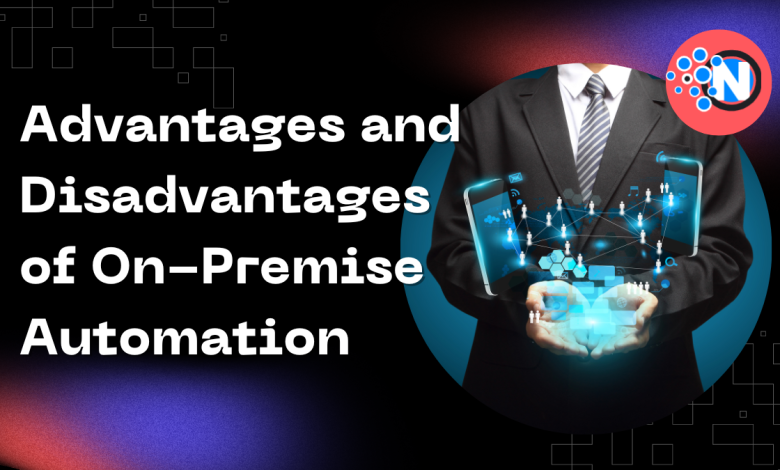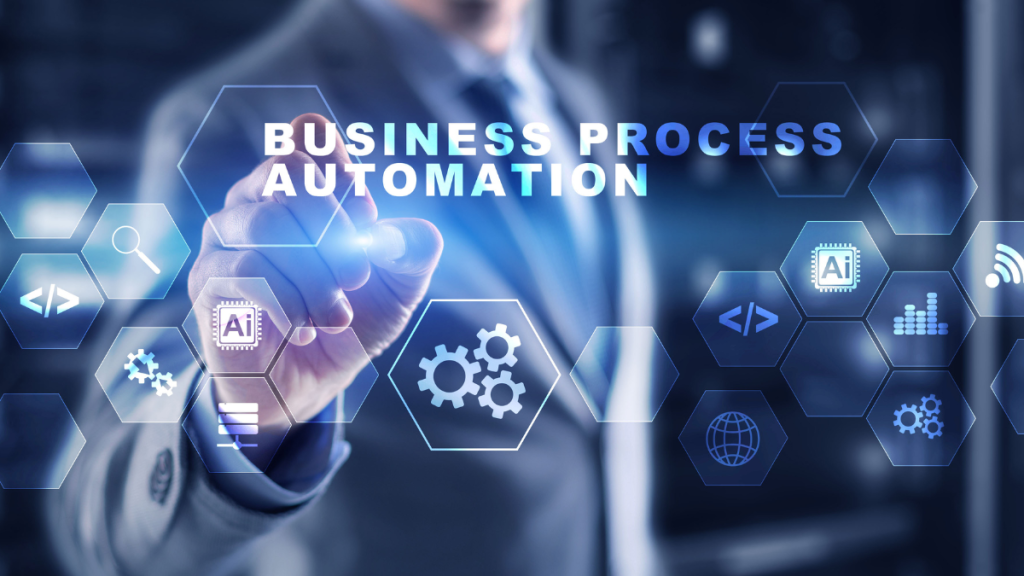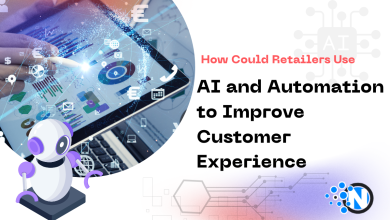Advantages and Disadvantages of On-Premise Automation

On-premises automation pertains to implementing technology to automate organizational tasks and processes, utilizing hardware and software systems on the organization’s physical premises.
This business process automation approach differs from cloud-based or third-party solutions, giving companies greater control over their automation processes and data. On-premise automation can encompass a wide range of technologies, including robotic process automation (RPA), artificial intelligence (AI), and machine learning (ML).
As per a recent Blueprint research report on automation re-platforming, 74% of survey respondents still utilizing their original RPA tool are either transitioning to a new automation vendor or contemplating a shift in their automation infrastructure to a different device. We will examine the advantages and disadvantages of on-premise automation platforms to assist you in making the finest decision for your automation journey.
This blog post will discuss the advantages and disadvantages of on-premise automation and explore how it can increase operational efficiency, reduce costs, and improve overall business performance.
What is On-Premises Automation?
On-Premise Automation involves an organization obtaining a license or copy of automation software and deploying the entire instance on its premises. That approach is often preferred for reasons such as enhanced control and security. Deploying an on-premise automation solution allows companies to customize and integrate the system and software with other business systems for better operational efficiency and productivity.
Advantages of On-Premises Automation
Enhanced Security
On-Premises automation enhances security because data is stored on the organization’s premises. That eliminates potential risks associated with transferring confidential information across networks or externally. On-premise systems are not subject to external threats like malicious hackers and malware. More stringent security measures can be applied as the organization directly controls the solution.
Cost-Effective
On-premise automation solutions are more cost-effective over time, leading to premier significant cost savings than cloud-based alternatives. Organizations will only have to pay subscription fees or licensing charges and not incur additional hosting, maintenance, or upgrade expenses. The total cost of ownership (TCO) can be low as organizations ultimately control the system and its performance.
Reduced Latency
On-premises automation solutions are not subject to external latency issues. That ensures that tasks, processes, and operations run smoothly with minimal interruptions. On-premise automation solutions can take advantage of the organization’s resources and infrastructure more effectively. Organizations can customize the system to tailor it to their specific requirements. On-premise solutions do not necessarily require a constantly working Internet connection, giving organizations greater control over their processes and procedures.
Better Integration
Due to deployment within the organization’s network, on-premises automation solutions are easier to integrate with existing IT infrastructure. That eliminates the need to transfer data across external networks or use third-party services, thus enhancing the organization’s ability to bring its existing systems and applications under the identical umbrella. It allows custom development of the automation platform to tailor it to the organization’s needs.
Increased Control
Organizations have complete control over on-premise automation solutions as they are situated within their own premises. That allows them to easily customize the automation platform per their requirements and ensure all processes align with its internal policies. The organization is fully responsible for the solution’s performance and reliability; no external vendor is involved. It allows the business to make changes promptly and eliminate downtime.

Disadvantages of On-Premises Automation
High Initial Investment
On-premise automation requires a significant initial investment to acquire and install the necessary hardware and software. Businesses must purchase the license and invest in physical hardware like servers, storage and networking systems. That can result in a high upfront cost, which is not feasible for small businesses or those on tight budgets. Companies must take responsibility for the systems’ maintenance and upkeep to remain functional, which can also increase overall business costs.
Maintenance Costs
On-premise automation solutions can be expensive ultimately due to hardware and software maintenance costs. Organizations must constantly update and upgrade the system to certify it remains up-to-date with the latest features and security protocols. Organizations must hire IT specialists to repair or replace the components if a fault occurs. The organization is responsible for all fetch associated with system maintenance and upgrades.
Limited Scalability
On-premise automation solutions are limited in their scalability capabilities since they are within the organization’s premises. The hardware and software requirements should be met to scale the system, which adds to the ownership cost. It can also be challenging to deploy additional resources when required due to the limited space available in the physical location.
Risk of Obsolescence
As technology evolves rapidly, on-premises automation solutions can only become obsolete if regularly updated. That diminishes the system’s effectiveness and raises the probability of human error due to outdated technology. That can lead to a decrease in productivity and may result in costly repairs if the system needs to be appropriately maintained. Organizations must constantly update their automation solutions with the latest features and security protocols.
Reliance on Internal IT
On-premise automation solutions require constant hardware and software maintenance to remain operational. That creates an extra burden on the organization’s IT staff to manage the system and handle any faults that may occur. Organizations must be prepared for extra costs associated with hiring additional personnel as the workload increases. That can challenge smaller organizations that may need more resources to invest in IT personnel.
Conclusion
On-premise automation solutions benefit businesses looking to keep processes in-house and maintain complete control over their data. However, they can be more expensive and less scalable than cloud-based solutions. Businesses should consider the pros and cons of on-premise automation solutions before investing in them. The advantages and disadvantages of on-premises automation solutions should be weighed carefully to determine if they fit the organization. By performing so, they can ensure that their automation solution is adequately managed and scaled to maximize efficiency and minimize risks.




